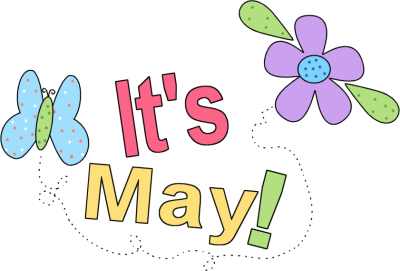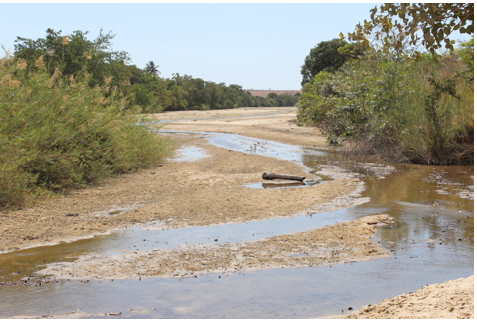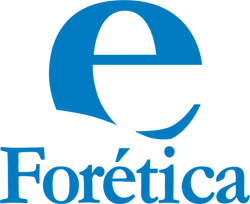your school name your district name street address city name, minnesota zip code administration office telephone 999/999-9999 - fax 999
Your School Name
Your District Name
Street Address City Name, Minnesota Zip Code
Administration Office Telephone 999/999-9999 - FAX 999/999-9999
Fall Kindergarten
Name. .
Teacher. . Date . . .
These are the two kindergarten fall measurements your child was given.
Letter Naming Fluency: Your child was able to name. .letters in one
minute. The fall Letter Naming Fluency is considered a measure of
exposure to print and
Letter Sound Fluency: Your child was able to name _____ letter sounds
in one minute. Our fall goal is to have all students above 8 letters
sounds per minute. By the spring of kindergarten our goal is to have
all children name 40+ letter sounds per minute.
This is how we measure Letter Naming Fluency and Letter Sound Fluency:
Sample 1
c c K b n w T m s x
Z p N d P b h f g R
A s v O e u Y k z C
n b k F t J H s r g
O M y c c L R z w u
Letter naming and sound fluency measures a student’s automaticity, or
fluency, in recognizing a series of random letters. There is much
research showing that early fluency measures such as this are
indicators of a student’s future ability to read. The letter naming
probe has both lower and uppercase letters, while the letter sound
probes only have lower case.
As a student’s fluency improves, their "brain power" can attend to
more demanding skills such as decoding.
On Letters Naming Fluency, the examiner gives the child the student
copy, and one minute to identify as many letters as possible. The
examiner marks the student responses on a copy. On Letter Sound
Fluency, the examiner counts the number of letter sounds per minute.
Letter Sound Fluency is more critical than Letter Naming. Parents
should be concentrating on letter sounds rather than letter names.
Fall Kindergarten
=================
Here are some quick and easy things you can do with your child to help
him or her learn about the sounds in words and to recognize letters
and sounds. Of course, the most important thing you can do is to read
with your child everyday.
Word Play
=========
Play with familiar words (your child’s name, family names etc.).
Change the words by changing the beginning letter: robin, bobbin,
hobin, dobin, lobin, etc.
Rhymes All Around
=================
While you are walking or driving in the car, try to make rhymes for
the things around you. They can be nonsense and silly words, too!
Magnetic Letters
================
Boxes of magnetic letters can be found at most grocery and discount
stores. Put your child’s name on the refrigerator and label photos and
other drawings with the beginning sounds or the whole word. Point out
the letter names and sounds and let your child play with the letters.
Sounds & Letter All Around
==========================
Use old newspapers and magazines to pick a “special letter” or letters
with your child. Have your child circle or cut out every special
letter they can find. Have your child find a certain letter or sound
on cereal boxes, cans, and other things around the house.
Play with Letters and Sounds
============================
Make up ways to remember the sounds of the letters such as a
mmm…mmm…good for the m.
Check out alphabet books from the library.
Teach the names and sounds in your child’s name and names of his or
her family members, friends, and pets.
Tell me what you see…
=====================
Look at pictures in books, photo albums, magazines, or newspapers, and
have your child describe what he or she sees in the pictures. Have him
or her make up a story to go along with the picture and tell it to
you.
Developed by Scott Linner and Jamie Harper: Kenai Peninsula Borough
School District
Acknowledgement for use of website materials-
Florida Department of Education, http://www.firn.edu/doe (April 2001)
References-
Adams, M.J., Foorman, B., Lundberg, I., Beeler, T. (1998) Phonemic
Awareness in Young Children. Baltimore: Paul Brookes.
Blevins, W. (1998). Phonics from A to Z: A Practical Guide.
New York: Scholastic.
O’Connor, R., Notari-Syverson, A., Vadasy, P. (1998). Ladders to
Literacy: A Kindergarten Activity Book. Baltimore: Paul Brookes.
Rees, D., Raison, G., Jones, B., Pugh, C., Sinclair, A., Dewsbury, A.,
Lambert, S. (1994) First Steps Reading Resource Book. Portsmouth, NH:
Heinemann.
Winter Kindergarten
Name. .
Teacher. .Date . . .
These are the three kindergarten winter measurements your child was
given.
Letter Naming Fluency: Your child was able to name. .letters in one
minute.
Letter Sound Fluency: Your child was able to name _____ letter sounds
in one minute. Our Winter goal is to have all students at or above 16
letters sounds per minute. By the spring of kindergarten our goal is
to have all children name 40+ letter sounds per minute.
Phoneme Segmentation Fluency: Your child was able to name . . phonemes
(individual sounds) in one minute. By the spring of kindergarten our
goal is to have all children name 35+ phonemes per minute.
T
Letter naming and sound fluency measures a student’s automaticity, or
fluency, in recognizing a series of random letters. There is much
research showing that early fluency measures such as this are
indicators of a student’s future ability to read.
As a student’s fluency improves, their "brain power" can attend to
more demanding skills such as decoding.
On Letters Naming Fluency, the examiner gives the child the student
copy, and one minute to identify as many letters as possible. The
examiner marks the student responses on a copy. On Letter Sound
Fluency, the examiner counts the number of letter sounds per minute.
Letter Sounds are much more important for children to master than
letter names.
his is how we measure Letter Naming Fluency and Letter Sound Flunecy:
Sample 1
c c K b n w T m s x
Z p N d P b h f g R
A s v O e u Y k z C
n b k F t J H s r g
O M y c c L R z w u
This is how we measure Phoneme Segmentation Fluency:
====================================================
Phoneme segmentation fluency measures a student's ability to
distinguish individual phonemes (sounds) in a word. The student is
timed for one minute, and the number of correct individual phonemes is
recorded.
As a student increases his/her phonemic awareness, they are better
able to identify and hear individual sounds in a word. This assessment
measures the phonological awareness of a child.
Shown to the right is a sample of the assessment. The examiner reads
each word and the student responds with the individual sounds of the
word. The examiner writes the student responses on the sheet.
Sample Probe 1
pad /p/ /a/ /d/ sock /s/ /o/ /k/
fat /f/ /a/ /t/ tick /t/ /i/ /k/
fine /f/ /ie/ /n/ boys /b/ /oi/ /z/
float /f/ /l/ /oa/ /t/ skin /s/ /k/ /i/ /n/
=======
Winter Kindergarten
===================
Here are some quick and easy things you can do with your child to help
him or her learn about the sounds in words and to recognize letters
and sounds. Of course, the most important thing you can do is to read
with your child everyday.
Have your child choose a word (for example, bear). Ask him or her to
identify the first sound of that word. If your child is unable to find
the first sound, help him/her find that sound, (B-b-b-bear).
I Spy or I’m thinking of something…
===================================
Play this game with your child – I spy something that begins with the
sound s-s-s-s-s-s-s. Keep describing the object until your child
guesses the object. Emphasize the beginning sound of the object (Yes,
spider begins with “ssssss.”). Remember to say the sound of the
letter, not the letter name.
Sing silly songs
================
Pick a sound and have your child exchange that sound for the beginning
sounds of all the words in a familiar song or just the words in the
chorus. For example: In “Row, Row, Row Your Boat,” change “merrily,
merrily, merrily” to “jerrily, jerrily, jerrily” or in “Happy Birthday
to You” change the song to “Bappy Birthday bo Bou…”
Sound Hunt
==========
Have your child hunt for things around the house that start with a
given sound – find all the things that start with the “mmmmm” sound.
When riding in the car, look for things that start with a sound. Try
to see how many sounds you can collect on the trip.
Guess it!
=========
Say a word with the beginning sound or sounds broken from the rest and
have the child guess it “I’m thinking of a /p/----/ig/. What is it?
Child “A pig!”
Developed by Scott Linner and Jamie Harper: Kenai Peninsula Borough
School District, Alaska
Acknowledgement for use of website materials - Florida Department of
Education, http://www.firn.edu/doe (April 2001)
References-
Adams, M.J., Foorman, B., Lundberg, I., Beeler, T. (1998) Phonemic
Awareness in Young Children. Baltimore: Paul Brookes.
Blevins, W. (1998). Phonics from A to Z: A Practical Guide.
New York: Scholastic.
O’Connor, R., Notari-Syverson, A., Vadasy, P. (1998). Ladders to
Literacy: A Kindergarten Activity Book. Baltimore: Paul Brookes.
Rees, D., Raison, G., Jones, B., Pugh, C., Sinclair, A., Dewsbury, A.,
Lambert, S. (1994) First Steps Reading Resource Book. Portsmouth, NH:
Heinemann.
Dynamic Indicators of Basic Early Literacy Skills
Spring Kindergarten
Name. .
Teacher. .Date . . .
These are the four kindergarten spring measurements your child was
given.
Letter Naming Fluency: Your child was able to name. .letters in one
minute.
Letter Sound Fluency: Your child was able to name _____ letter sounds
in one minute. Our Winter goal is to have all students above 16
letters sounds per minute. By the spring of kindergarten our goal is
to have all children name 36+ letter sounds per minute.
Nonsense Word Fluency: Your child was able to read . .correct letter
sounds in one minute. Our goal is to have all children name 25+ letter
sounds per minute.
This is how we measure Letter Naming Fluency and Letter Sound Flunecy:
Letter naming and sound fluency measures a student’s automaticity, or
fluency, in recognizing a series of random letters. There is much
research showing that early fluency measures such as this are
indicators of a student’s future ability to read.
As a student’s fluency improves, their "brain power" can attend to
more demanding skills such as decoding.
On Letters Naming Fluency, the examiner gives the child the student
copy, and one minute to identify as many letters as possible. The
examiner marks the student responses on a copy. On Lletter Sound
Fluency, the examiner counts the number of letter sounds per minute.
Letter Sound F luency is more critical than letter naming.
This is how we measure Nonsense Word Fluency:
=============================================
Nonsense word fluency measures a student’s ability to produce
individual letter sounds and then blend them together to read. The
student is timed for one minute, and the number of correct letter
sounds is recorded.
Shown to the right is a sample of the nonsense word fluency
assessment. The student attempts to say each sound or read the whole
word. The examiner writes the student responses on the examiner sheet.
Probe 1
sok vos ut lut kag
san az mof lat nid
og zof pav mel yik
av fef wis hos voj
Spring Kindergarten
===================
Here are some quick and easy things you can do with your child to help
him/her learn about the sounds and letters in words and to begin to
become a reader. Of course, the most important thing you can do is to
read with your child everyday.
Make Silly Sentences
====================
Have your child make sentences that all begin with the same letter
sound: “Six snakes sell sodas.”
Clap the sounds
===============
Say simple words starting with two sounds and working up. Have your
child clap for each sound in the word. If this task is too difficult,
start with compound words like /pop/ /corn/ and have them clap for
each word.
Alphabet Hopscotch
==================
Use sidewalk chalk to make a hopscotch board with alphabet letters. As
your child grows, you can also put simple short words in the hopscotch
squares.
Play “Say it Fast”
==================
Break a word into parts and have your child say it fast. “Look,
there’s a spi-der. Can you say it fast?” As your child grows, you can
make this more challenging by breaking the word into individual
sounds. “Look, there’s a m-oo-se, can you say it fast?”
Which one of these words is not like the other?
===============================================
Say a series of words with the same beginning sound and one that
starts with a different sound. For example, “cat, car, can, mop.”
Which one of these words is not like the other? You can make this more
difficult as your child progresses by working with ending sounds too.
Developed by Scott Linner and Jamie Harper: Kenai Peninsula Borough
School District
Acknowledgement for use of website materials-
Florida Department of Education, http://www.firn.edu/doe (April 2001)
References-
Adams, M.J., Foorman, B., Lundberg, I., Beeler, T. (1998) Phonemic
Awareness in Young Children. Baltimore: Paul Brookes.
Blevins, W. (1998). Phonics from A to Z: A Practical Guide.
New York: Scholastic.
O’Connor, R., Notari-Syverson, A., Vadasy, P. (1998). Ladders to
Literacy: A Kindergarten Activity Book. Baltimore: Paul Brookes.
Rees, D., Raison, G., Jones, B., Pugh, C., Sinclair, A., Dewsbury, A.,
Lambert, S. (1994) First Steps Reading Resource Book. Portsmouth, NH:
Heinemann.
[Type text]
 ABSOLUTE MAGNITUDES OF SUPERNOVAE SUMMARY USING THE HUBBLE LAW
ABSOLUTE MAGNITUDES OF SUPERNOVAE SUMMARY USING THE HUBBLE LAW PORTI DI BARI BARLETTA MONOPOLI LEGGE 6 NOVEMBRE 2012
PORTI DI BARI BARLETTA MONOPOLI LEGGE 6 NOVEMBRE 2012 MAYO 2017 HOMMOCKS MIDDLE SCHOOL ENSALADA DE TEMPORADA 12V
MAYO 2017 HOMMOCKS MIDDLE SCHOOL ENSALADA DE TEMPORADA 12V CALIFORNIA CASE LAW UPDATE – SELECTED CALIFORNIA CASES CALIFORNIA
CALIFORNIA CASE LAW UPDATE – SELECTED CALIFORNIA CASES CALIFORNIA APPENDIX 12 FUNDING APPLICATION FOR JOINT RESEARCH PROJECTS
APPENDIX 12 FUNDING APPLICATION FOR JOINT RESEARCH PROJECTS  NMF RAPPORT 061012 MILJØEVALUERING AV MADA WOODLANDS SKOGPLANTEPROSJEKTER MADAGASKAR
NMF RAPPORT 061012 MILJØEVALUERING AV MADA WOODLANDS SKOGPLANTEPROSJEKTER MADAGASKAR “ FINEKO CS” DOO SUBOTICA HARAMBAŠIĆEVA 14 TEL 024551792
“ FINEKO CS” DOO SUBOTICA HARAMBAŠIĆEVA 14 TEL 024551792 PERFORMANCE PLANNING AND DEVELOPMENT ANNUAL REVIEW FORM USE THE
PERFORMANCE PLANNING AND DEVELOPMENT ANNUAL REVIEW FORM USE THE CONCURSO DE FOTOGRAFÍA PRIMER APELLIDO SEGUNDO APELLIDO NOMBRE Nº
CONCURSO DE FOTOGRAFÍA PRIMER APELLIDO SEGUNDO APELLIDO NOMBRE Nº SC ODISEEA SRL RM VÂLCEA STRADA FLORILOR NR12
SC ODISEEA SRL RM VÂLCEA STRADA FLORILOR NR12 SOLICITUD DE SERVICIO PARA LA EVALUACIÓN DE LA CONFORMIDAD
SOLICITUD DE SERVICIO PARA LA EVALUACIÓN DE LA CONFORMIDAD